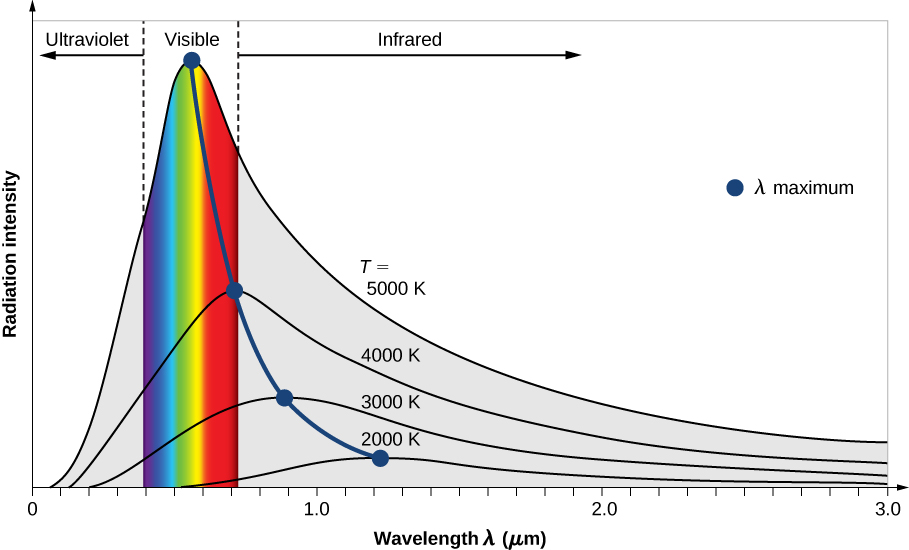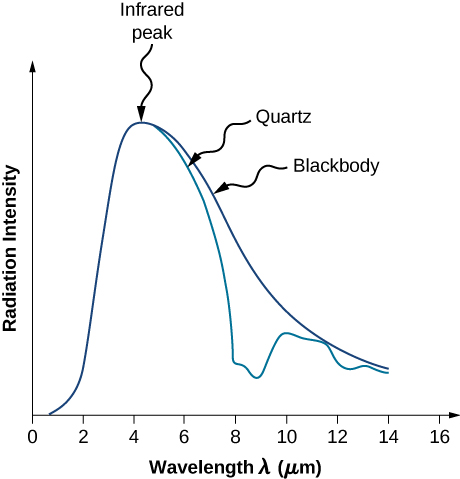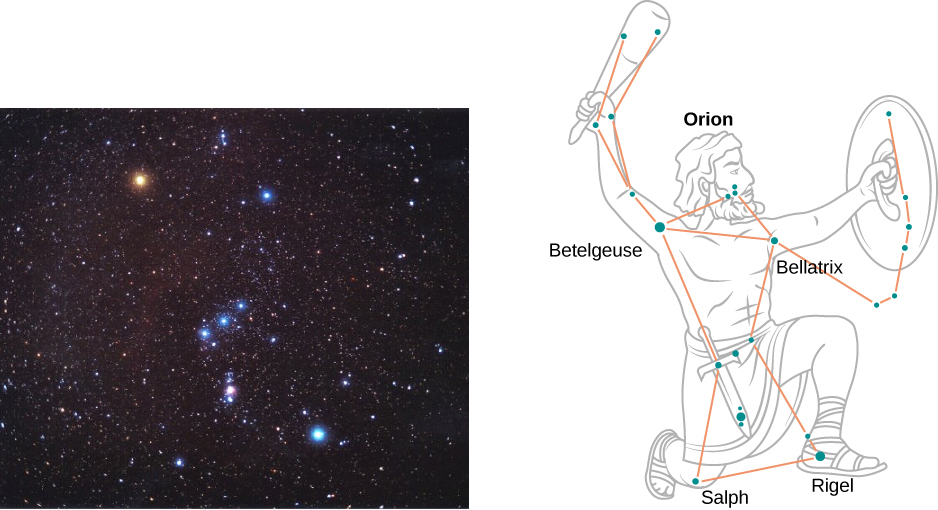| << Chapter < Page | Chapter >> Page > |


Two important laws summarize the experimental findings of blackbody radiation: Wien’s displacement law and Stefan’s law . Wien’s displacement law is illustrated in [link] by the curve connecting the maxima on the intensity curves. In these curves, we see that the hotter the body, the shorter the wavelength corresponding to the emission peak in the radiation curve. Quantitatively, Wien’s law reads
where is the position of the maximum in the radiation curve. In other words, is the wavelength at which a blackbody radiates most strongly at a given temperature T . Note that in [link] , the temperature is in kelvins. Wien’s displacement law allows us to estimate the temperatures of distant stars by measuring the wavelength of radiation they emit.
When simplified, [link] gives
Therefore, Betelgeuse is cooler than Rigel.
Check Your Understanding The flame of a peach-scented candle has a yellowish color and the flame of a Bunsen’s burner in a chemistry lab has a bluish color. Which flame has a higher temperature?
Bunsen’s burner

The second experimental relation is Stefan’s law , which concerns the total power of blackbody radiation emitted across the entire spectrum of wavelengths at a given temperature. In [link] , this total power is represented by the area under the blackbody radiation curve for a given T . As the temperature of a blackbody increases, the total emitted power also increases. Quantitatively, Stefan’s law expresses this relation as

Notification Switch
Would you like to follow the 'University physics volume 3' conversation and receive update notifications?